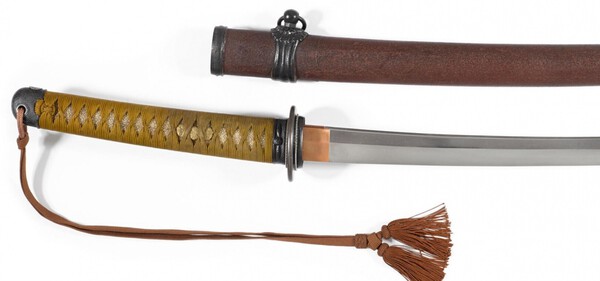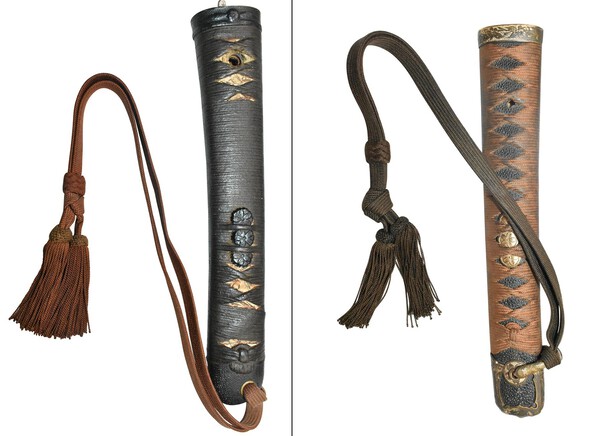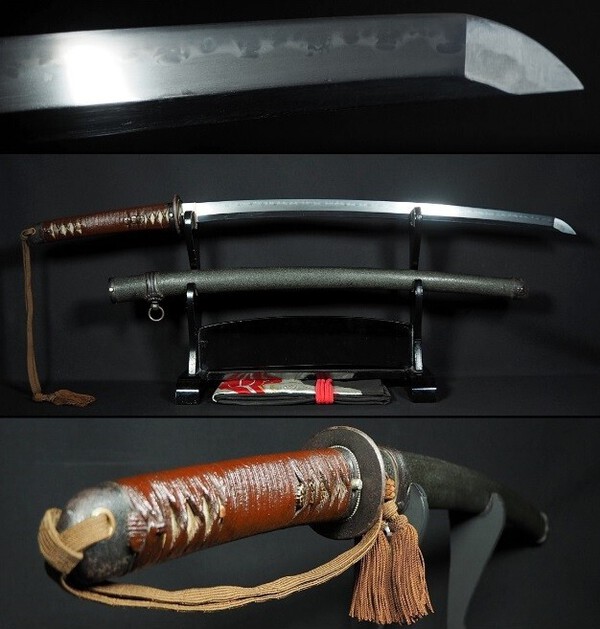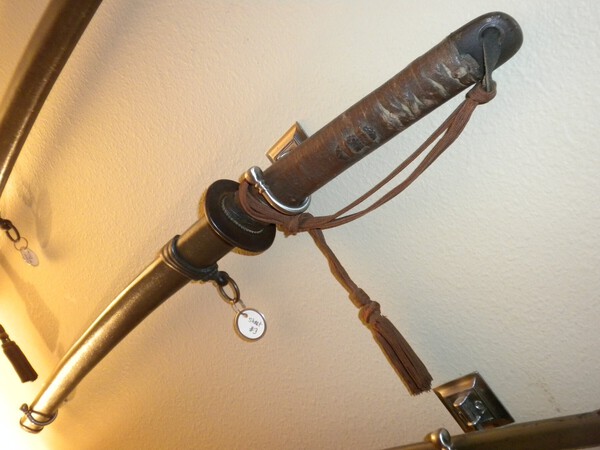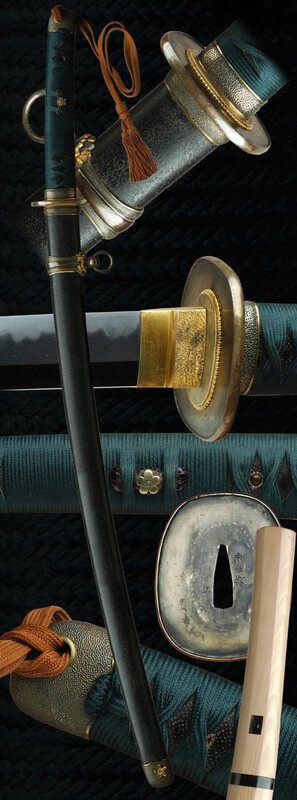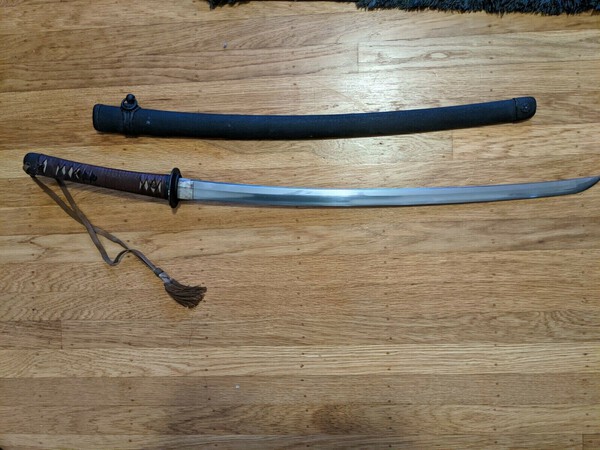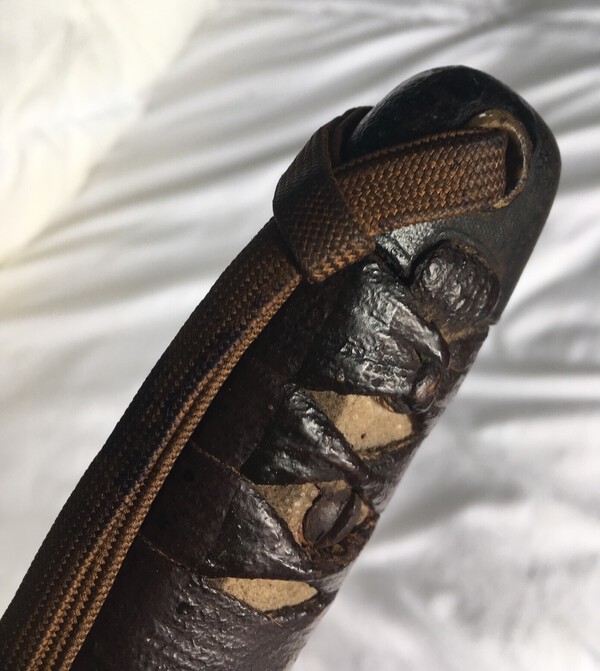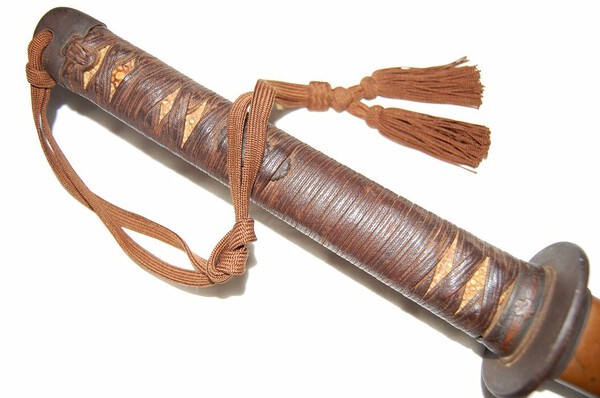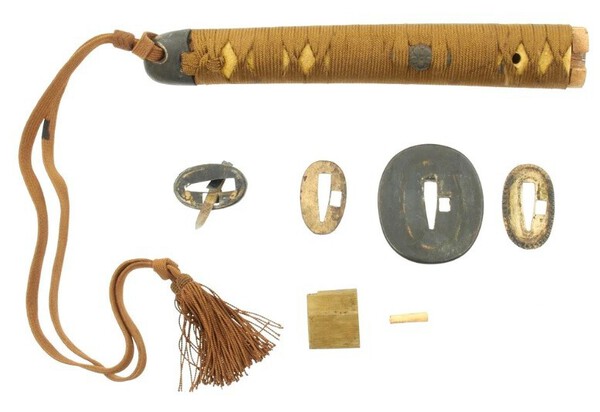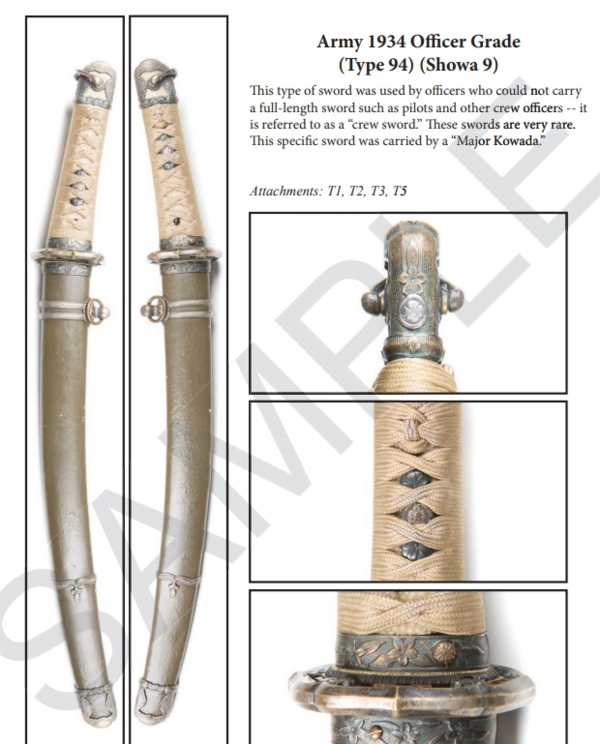
mdiddy
Dealers-
Posts
642 -
Joined
-
Last visited
-
Days Won
1
Content Type
Profiles
Forums
Events
Store
Downloads
Gallery
Everything posted by mdiddy
-
Looks like Takayama-to Kanenao Kore Saku to my eye
-
Breaking News On The All-Brown Army Gunto Tassel
mdiddy replied to Bruce Pennington's topic in Military Swords of Japan
-
Breaking News On The All-Brown Army Gunto Tassel
mdiddy replied to Bruce Pennington's topic in Military Swords of Japan
The navy tassels are a darker shade of brown. Attached is a picture showing a comparison. They are not interchangeable, but I have seen several lighter brown tassels on kai guntos indicating the tassel was scavenged off something else (i.e. late war gunto or civil gunto) and then added to the kai gunto. -
Breaking News On The All-Brown Army Gunto Tassel
mdiddy replied to Bruce Pennington's topic in Military Swords of Japan
-
Agree with Yoshikane, Showa Jyu Roku Nen = 1941
-
Based on the shape, hada, and what looks like 'lightbulbs' at the top of the gunome, I would surmise the blade is likely a showato
-
Breaking News On The All-Brown Army Gunto Tassel
mdiddy replied to Bruce Pennington's topic in Military Swords of Japan
-
Breaking News On The All-Brown Army Gunto Tassel
mdiddy replied to Bruce Pennington's topic in Military Swords of Japan
@Bruce Pennington Here is another one (I recommend counting this as one; the sword above looks to also have a brown tassel but it is admittedly hard to make out) -
Breaking News On The All-Brown Army Gunto Tassel
mdiddy replied to Bruce Pennington's topic in Military Swords of Japan
-
Breaking News On The All-Brown Army Gunto Tassel
mdiddy replied to Bruce Pennington's topic in Military Swords of Japan
-
Breaking News On The All-Brown Army Gunto Tassel
mdiddy replied to Bruce Pennington's topic in Military Swords of Japan
The bottom 2 photos are of the same gunto, so only two additional total for the chart -
Breaking News On The All-Brown Army Gunto Tassel
mdiddy replied to Bruce Pennington's topic in Military Swords of Japan
-
Breaking News On The All-Brown Army Gunto Tassel
mdiddy replied to Bruce Pennington's topic in Military Swords of Japan
-
OMG, i think tangs been chromed!!!!!
mdiddy replied to phil reid's topic in Military Swords of Japan
In my experience, when chrome was applied the whole thing got chromed - blade, nakago, everything. Agree with the thoughts above, the nakago on this one has just been assertively cleaned. -
Breaking News On The All-Brown Army Gunto Tassel
mdiddy replied to Bruce Pennington's topic in Military Swords of Japan
-
Breaking News On The All-Brown Army Gunto Tassel
mdiddy replied to Bruce Pennington's topic in Military Swords of Japan
@Bruce Pennington Great job tracking the real data! I have a bunch I can add. Here is one that was on ebay recently: https://www.ebay.com/itm/225595288981 -
Big Collection - Something for Everyone!
mdiddy replied to Bruce Pennington's topic in Military Swords of Japan
Wow, nice find, that is a serious trove! Amongst everything else, there is a lot of really cool officer-specific content near the end, e.g. general ID'd swords. Impressive. -
Thank you Bruce, looking forward to moving forward
-
I apologize if my language offended you, but I am glad I finally got your attention. You have a history of ignoring my scrutiny and I don’t think that’s a function of inflammatory language. I think it’s a function that you don’t like scrutiny. I don’t like scrutiny either – no one does - and I’ve had to work through that myself in very public ways in public forums before (see attached for an example of your contribution). If you prefer to have scrutiny shared privately, or more congenially, that is fine with me, but that is a two way street and I expect the same from you. I recommend you take my scrutiny as an opportunity. For someone of your growing stature in this community, you should be better, you should ascribe to a higher standard. Let me be blunt – your mistaking the brown cord and over-shooting the sword as gunzoku is the type of simple observational mistake that is beneath you. I really hate having a public spat and it’s unfortunate it came to this. If there is a personality conflict we need to resolve, you are welcome to contact me directly and we can sort it out. I look forward to continue contributing to the collective understanding of nihonto, and engaging you in frank debate to further our learning. At the end of the day if we agree to disagree that’s fine, but I think we can both perform to a higher standard.
-
@John C Yeah that’s interesting but still not quite putting it to bed. Here, let me try this way, how does what you are saying apply to @Bruce Pennington's assessment of this sword: 1. The basic identification of the item is incorrect 2. That incorrect identification is then referenced against someone else’s document based research that was ungrounded in real world data but is now taken at face value as gospel 3. Incorrect identification + ungrounded research taken at face value = a fantastical assessment The ungrounded document research becomes an accelerant for falsehood. If real world data had been factored in somewhere along the way, it would have tempered the falsehood. That matters because these things spread quickly from forum to forum and if unchecked, every sword with a brown cord we only see half of in a picture is going to be labeled as gunzoku. That’s just bad, shoddy research, I don’t see how it can be seen differently. Essentially, your two methods of research are not mutually exclusive. But I remain open-minded, how does your philosophy / approach solve that scenario?
-
@John C Here is another fun fact about judging gendaito vs. showato. The character of the color of the nakago can also sometimes be an indicator. Gendaito sometimes shows a silvery finish on the nakago. Showato, maybe because of how that type of steel ages, will rarely feature a silvery finish and rather show a darker/dirtier type of brown or rust finish. Admittedly this observation is a little looser, but in searching though my archives I could not find any showato examples I had photographed that showed the silvery characteristics on the nakago of gendaito. For example, here are a few nakago to consider: a gendaito by Nagamitsu, a gendaito by Seki Kanehide, and a showato by Seki Kanehiro (my photo settings were probably a little different for each sword, but I think this generally illustrates the gist)
-
It's at least a positive sign. Look also to see if there is ji nie and any other hataraki in the hamon. Look also to see if/how the nie pools along the nioi guchi.
-
If you are going to defer to others on something as basic as a tassel when confronted with evidence, why are you authoritatively commenting on it in the first place? Much less using it as the basis to extrapolate to some more random and rare scenario (i.e. ‘Gunzoku'). And that’s my point on why some of Nick’s info can be dangerous when it is not understood in the context of the real world data. Yes, and that’s the problem. His research is really great and fascinating but there are holes. A straight verbatim reading of his analyses without some understanding of the underlying real world data results in these quacky assessments. You are correct, my statement that "all the all-brown tassels were on Type 3's" was inaccurate. In my haste I said 'all' when 'most' would have been more accurate.
-
Philosophically interesting, but assumes the data and the document say the same thing and they often do not. For example:
-
In addition to the distinctive dark spots in the hamon that John mentions (to my eye, they are like lightbulbs at the top of gunome formations), you can also look for nie in and around the hamon. The showato rarely (if ever) show nie while a lot of the gendaito do. Even good gendaito done in nioi deki may show traces of nie where the hardening was inconsistent in a spot or two.



